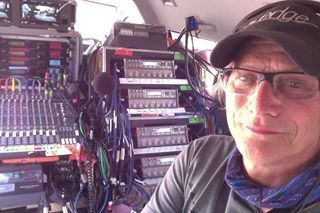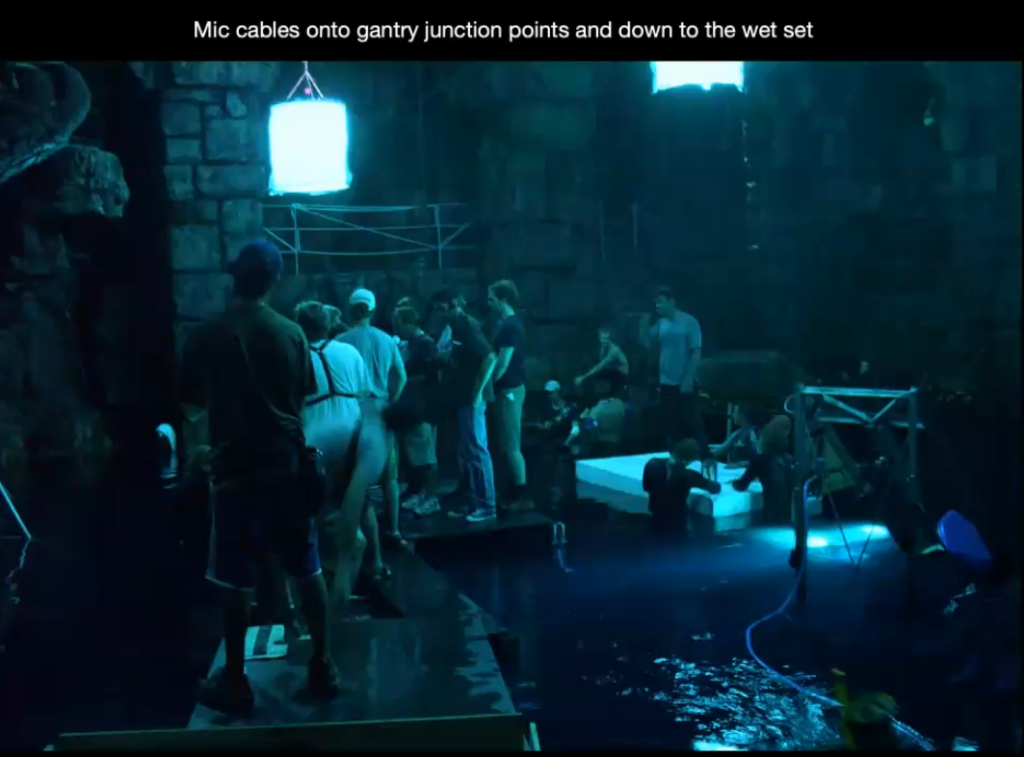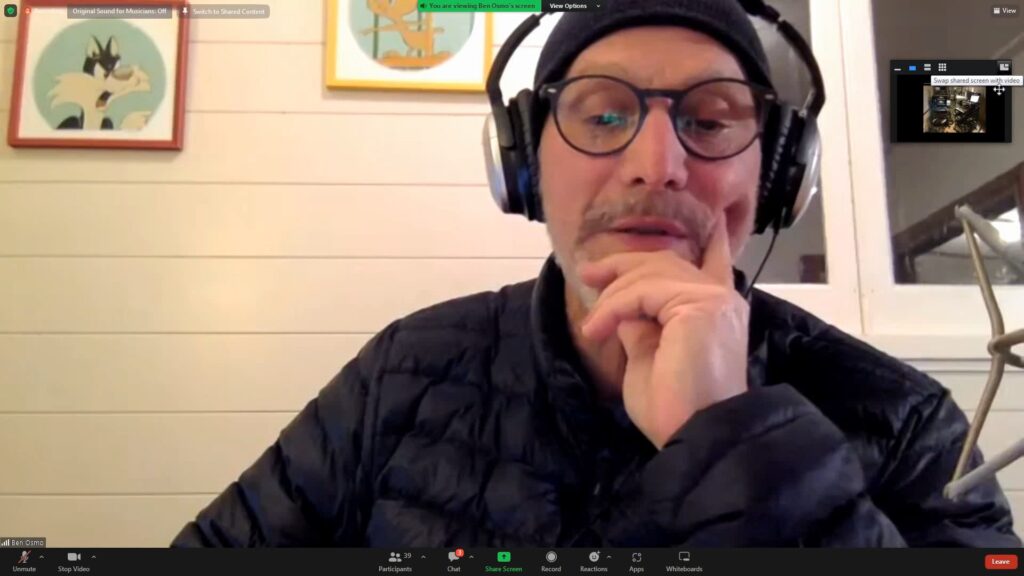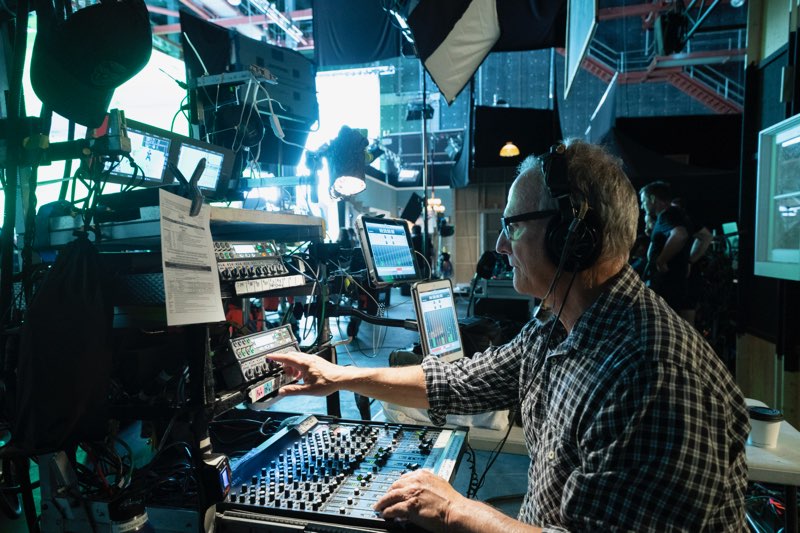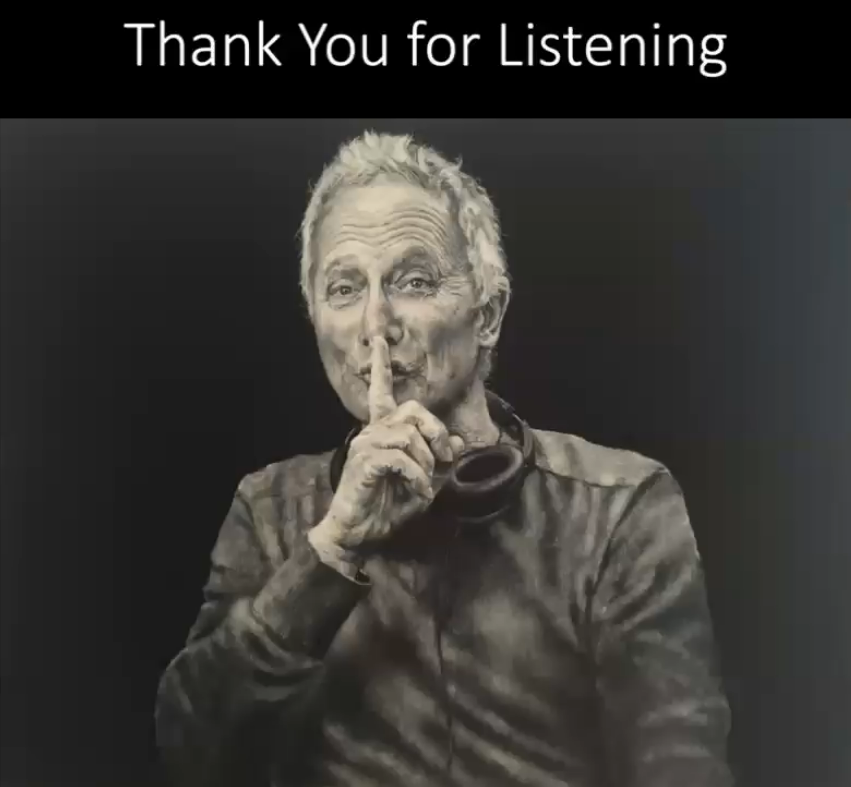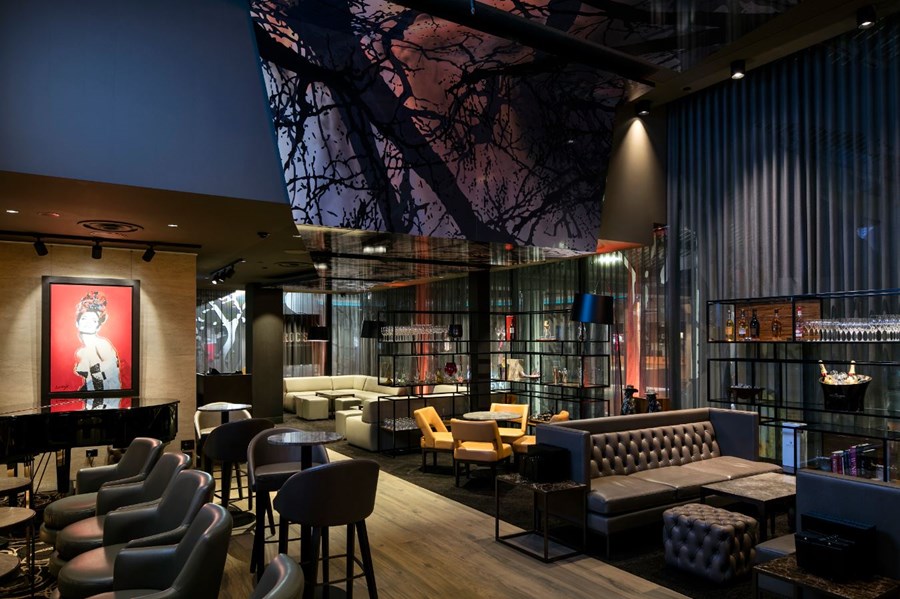On Monday 14th August, the Melbourne Section of the AES held our Annual General Meeting followed by our regular bi-monthly meeting.
Further details on the AGM proceedings can be found at https://aesmelbourne.org.au/2023-agm
Following the AGM, Academy Award winner Ben Osmo (Best Achievement in Sound Mixing 2015 – Mad Max: Fury Road) presented on the topic of:
Film Production Sound Through the Years
changes and added responsibilities.
Newly re-elected Chairman Graeme Huon introduced Ben with a brief outline of Ben’s career.
Ben then took us through his career in location sound production from his start in 1975 at the ABC. He told us that the typical setup of the time was a Nagra portable battery-operated tape recorder and a shotgun microphone on a long boom pole. He explained that the shoots were often one-camera affairs with shots framed as wide-shot, mid-shot, and close-up with the microphone positioned accordingly to achieve the appropriate sound balance.
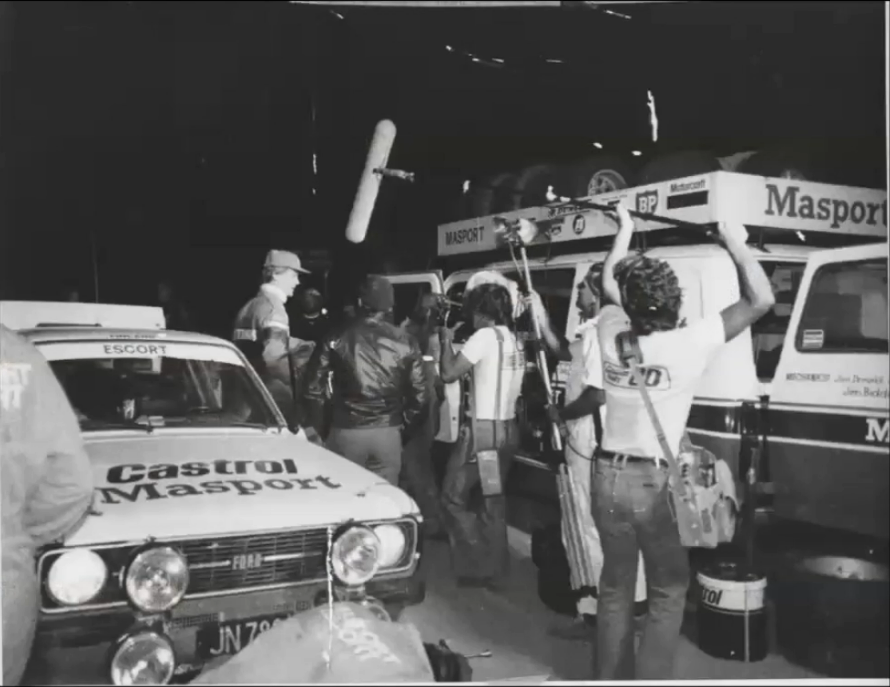
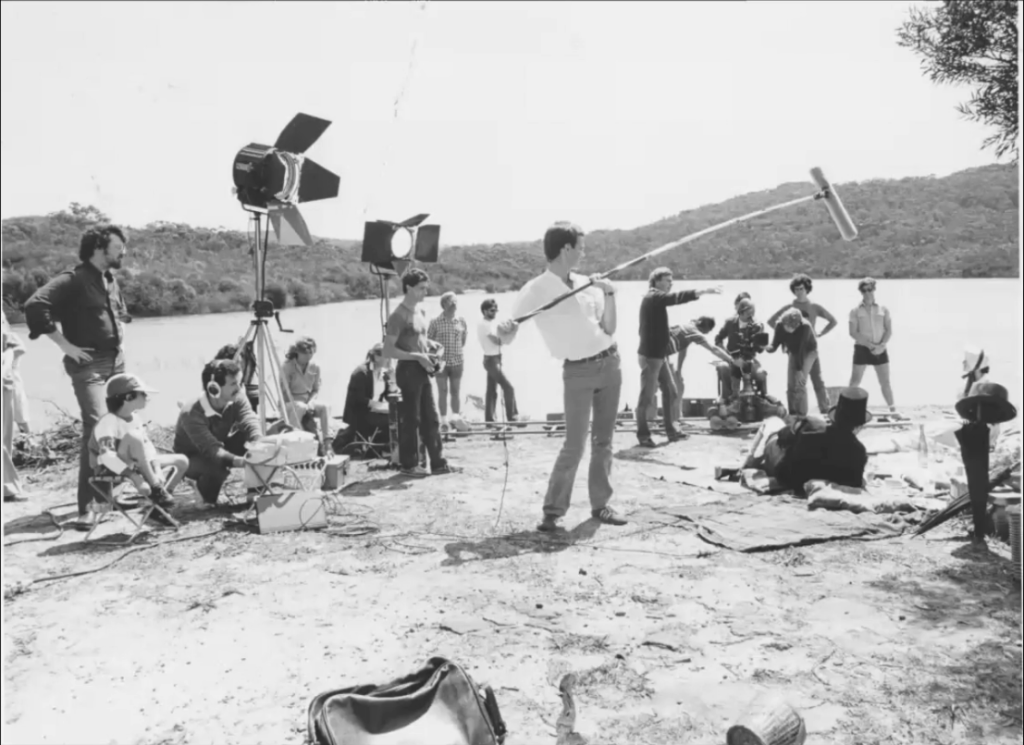
Ben then described the Dead Calm shoot (1987) using a stereo Nagra equipped with Dolby-A Noise Reduction. Here we first heard some of the logistical challenges of film location work, as he recounted that in this case, the location filming had to take place offshore, an hour’s boat travel from the mainland to give the appearance of the open seas.
He commented that they were still mainly using booms, as radio mics were still in their infancy.
Moving on to Strictly Ballroom, he noted that a lot of dialogue happened while the actors were dancing, and how he used some in-ear monitors for timing cues, but mainly used a thump track fed to bass bins, with high-pass and low-pass filters used to separate the dialogue and thump track.
With another film, Lorenzo’s Oil, Ben described the set design and the acoustic treatment used to compensate for both ceiling-less and large-scale interior sets, as well as the use of early in-ear monitors by the lead actor for motivation and silent cues.
Moving on to his next production, The Phantom, he commented that radio mics were starting to come into their own, and Sony DAT recorders started to come into use alongside the Nagra tape recorders.
He described working on Babe in 1994 and the use of animatronic characters, where communication between the puppeteers and the director increased the system’s complexity. Moving on to Babe 2 in 1998 we heard how the ProTools digital workstation was starting to be used. Ben described using time compression in ProTools for previewing the audio during slow-motion review playback to maintain sync.
With his next project Peter Pan, he described using Lectrosonics radio mics and how the small size of their transmitter packs made concealing them more practical than earlier examples. He also described the challenges of working on the wet set, with the boom mics still having to be being cabled.
The next production he covered was Charlotte’s Web, where the production had moved to largely CGI (Computer Generated Imagery) with less animatronics used for non-human characters, which changed the dynamic on set.
He then moved on to The Boys Are Back, where the location house was built as a set and the roof had removable AstroTurf fitted to allow interior shooting to continue during the frequent periods of rain, without the noise of rain on the roof bleeding into the audio.
On his next project, The Sapphires Ben described the process of shooting actor Chris O’Dowd playing the piano to a pre-recorded ProTools playback. He told us that he was now using a Sound Devices 788T solid-state recorder, and Sonosax SX10 mixer, and had rigged a PA system for playback.
Happy Feet was Ben’s first feature involving motion capture. He described the capture process and the process of micing the dancers. He noted that communication was critical, and described how the motion capture dancers, whose movements were being translated to the CGI penguin characters, were kitted for comms as well as having miniature DPA mics on their feet and foreheads to capture their dance performances alongside the usual boom mic capture.
Ben then moved on to the project that brought him the Oscar for Best Achievement – Sound Mixing, Mad Max: Fury Road. He played a pre-produced video he had created to describe his work on the project, covering the recording equipment, radio mics and their associated antenna distribution, and power systems, as well as the methods of rigging microphones, radio antennas and power systems within the many “war rig” vehicles featured in the production. The complex communications requirements and solutions were also covered, as were the challenges of shooting in the extreme conditions of the Namibian Desert.
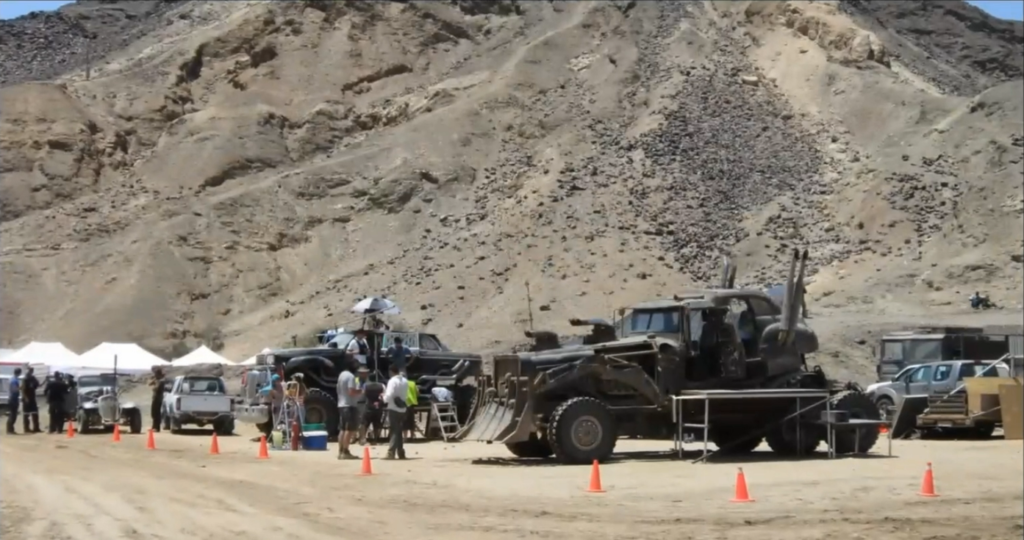



The link to the full video “Mad Max Behind the Scenes: Audio” is at the bottom of this page.
After the video, Ben expounded on several microphone placement challenges and some sound effect capture experiences.
He went on to describe the Kettering Incident shoot in Tasmania – one involving a much smaller kit, where the dry and dusty Namibian desert was replaced by the lush Tasmanian wilderness.
At this point Ben stopped for a short Q&A session that covered topics like the preparation required before a shoot, equalization of sources at the time of recording, equipment lost to the harsh conditions, and the proportion of location sound used in the final mix.
Ben then spoke about his work on Peter Rabbit, which was a fully CGI production, simplified by the minimal interaction between the live actors and CGI characters.
For his next film, Alien: Covenant, Ben replayed a video created by Adam Savage where Adam interviewed Ben as a “Behind The Scenes” on the topic of sound for this production.
Ben went on to describe the criticality of communication, as well as the process of sound effect creation.
The link to the full Adam Savage video is at the bottom of this page.
For the Friday on My Mind Easybeats bio-pic project, Ben described recording the musical performances and integrating them into the final mix.
For the film Three Thousand Years of Longing, Ben described how the Director, George Miller required the use of 100% location sound, so Ben outlined the process of acoustic treatment, and microphone fitting, as well as the use of the now mature CGI technology to “paint out” in-shot microphones, giving greater flexibility in lavalier mic fitting and boom mic placement.
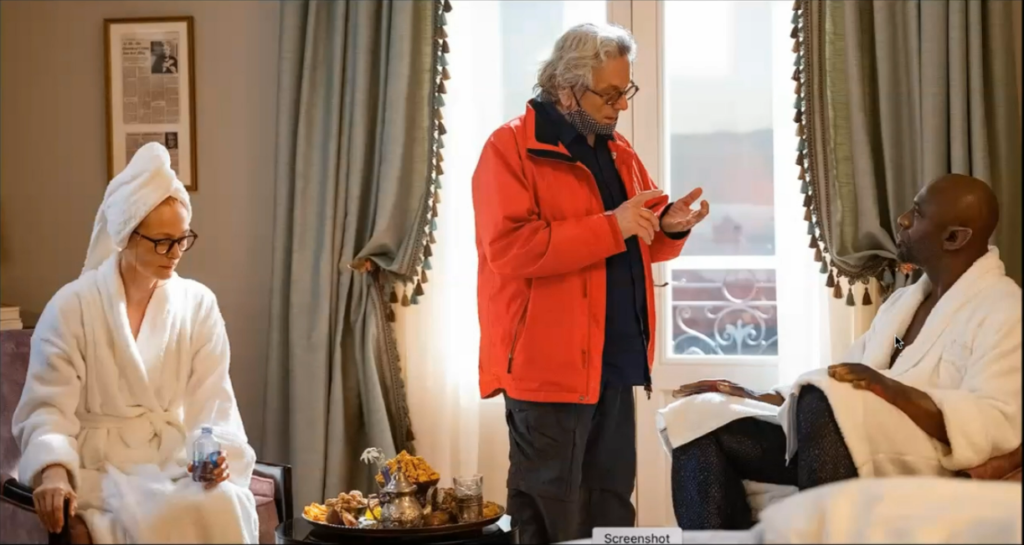
This production was shot during COVID, and Ben explained the challenges that created.
Ben then described his last production, which cannot be named as it is yet to be released. This limitation resulted in Ben displaying a lot of pictures of gear setups, but no set photos. It was another action film that required complex communication and mic rigging.
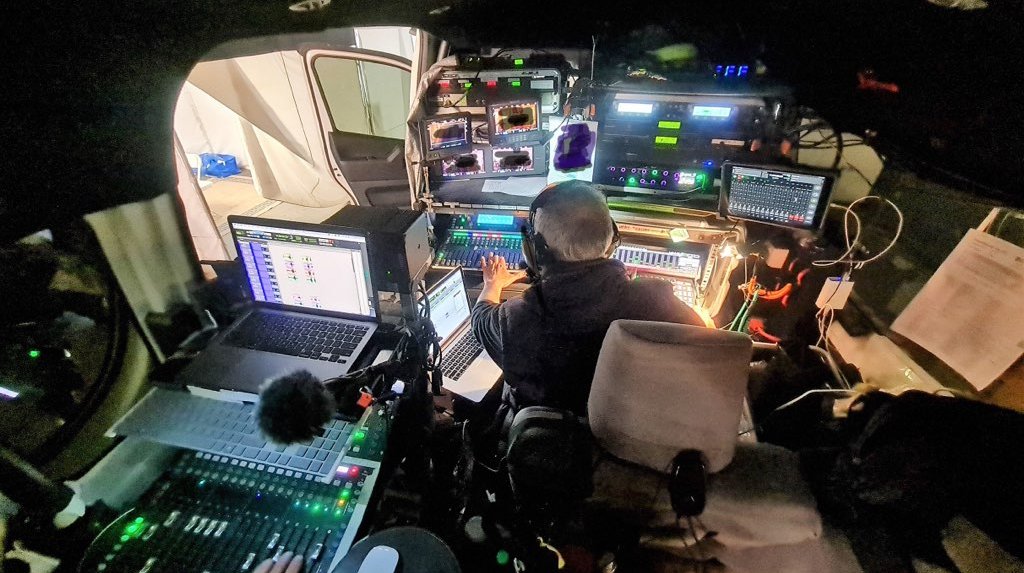
Ben covered the radio mic spectrum complexities, as well as the advanced solar power options available for the sound van.
The session ended with a further Q&A covering topics like the hours required in prep and on-set and the evolution of set communications requirements.
The Melbourne Section thanks Ben for the time and effort he put into this presentation.
Related Links:
Adam Savage – Behind the Scenes: The Sounds On Set of Alien: Covenant!
https://www.youtube.com/watch?v=ZKmJ1x2xfbY
Audio Technology – Ben Osmo Rig Tour https://youtu.be/70n3RBE7Akw
Author: Peter Smerdon (Secretary)

